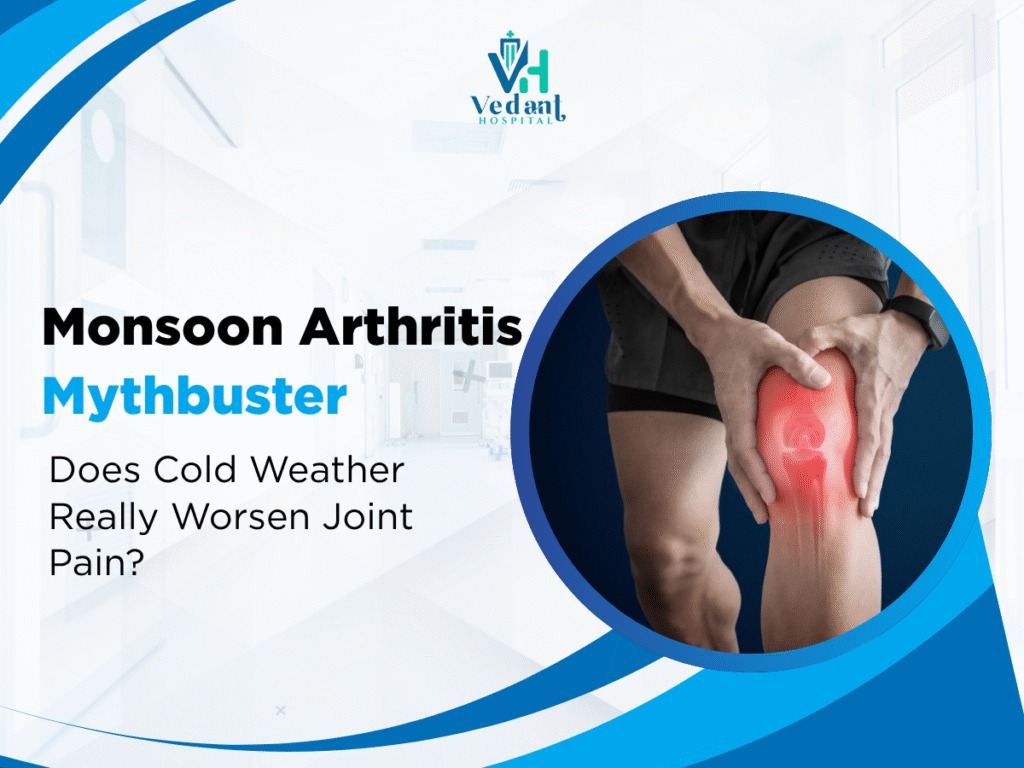Many people in India complain that their joint pain worsens during the monsoon or winter. But is this just a coincidence—or is there science behind it?
If you’re someone who has arthritis or chronic joint issues, this blog will help you separate fact from fiction. We’ll break down the myths, share expert advice from top orthopedic surgeons in Gwalior, and explain when traditional surgery might be the safest and most effective option.
1. The Myth: Does Weather Really Worsen Joint Pain?
Understanding the connection between climate and joints
It’s a common belief that cold, damp weather increases arthritis pain. While science hasn’t found a direct cause, here are some possible explanations:
- Barometric pressure drops may cause joints to swell
- Lower temperatures may stiffen muscles and slow circulation
- People may move less in colder months, leading to stiffness
2. What Orthopedic Surgeons Say About Monsoon Joint Pain
Expert insights from joint replacement surgeons in Gwalior
Orthopedic specialists often see a spike in consultations during the rainy season. According to leading joint replacement surgeons in Gwalior:
- Patients report increased stiffness and swelling
- Knee and hip arthritis are the most affected
- Early-stage arthritis can often be managed with exercise and therapy
- In advanced cases, traditional surgery remains the most reliable option
3. How to Manage Joint Pain During Monsoon Naturally
Daily habits that can reduce joint discomfort
Try these science-backed tips to stay mobile and pain-free:
- Stay active indoors – Gentle yoga, walking, or stretching
- Use heat therapy – Heating pads can ease stiffness
- Keep joints warm – Wear socks, gloves, or braces
- Avoid damp environments – Use a dehumidifier if needed
- Eat anti-inflammatory foods – Turmeric, ginger, omega-3-rich foods
For personalized advice, consult an orthopedic surgeon in Gwalior to assess the severity of your condition.
4. When Traditional Joint Surgery Is the Best Option
Why conventional surgical methods still matter
If conservative methods fail and your quality of life is suffering, surgery may be needed. Traditional joint replacement procedures are:
- Proven safe and effective for decades
- Less expensive and more widely available than robotic alternatives
- Better suited for patients with advanced arthritis or complex cases
Leading hospitals in Gwalior offer full orthopedic setups with experienced surgical teams, physiotherapy, and aftercare.
5. Checklist: Do You Need a Joint Replacement Evaluation?
- Persistent pain that worsens in cold/rainy weather
- Difficulty walking, climbing stairs, or doing daily tasks
- Swelling and joint deformity
- Pain not relieved by medication or therapy
- X-ray showing bone-on-bone arthritis
FAQs: Joint Pain & Weather
Q1. Why do my knees hurt more during monsoon?
Changes in air pressure and humidity may lead to joint swelling and increased pain sensitivity.
Q2. Should I avoid exercise when I feel joint pain in winter?
No. Gentle movement can actually reduce stiffness and increase circulation—just avoid overexertion.
Q3. Is robotic joint surgery better?
Robotic surgeries are newer but not always necessary. Traditional surgery remains highly effective, especially in real-world hospital settings.
Conclusion: Joint Pain Is Manageable—Don’t Let Myths Mislead You
Monsoon may amplify your joint pain, but the root issue is arthritis—not the weather itself. With the right care, including physiotherapy and, when needed, traditional joint replacement surgery, you can lead a pain-free life year-round.
Visit a trusted orthopedic surgeon in Gwalior for a full evaluation. Don’t wait until the pain becomes unbearable—relief is possible!


